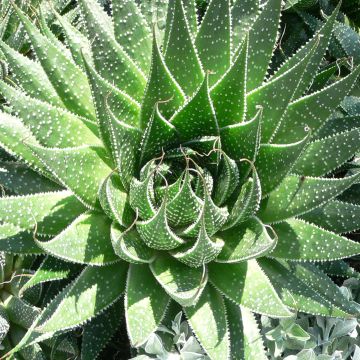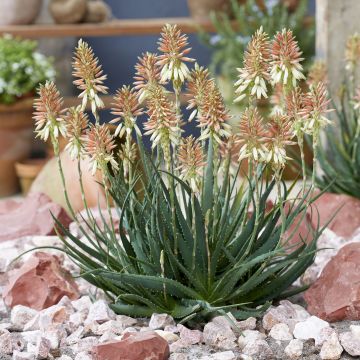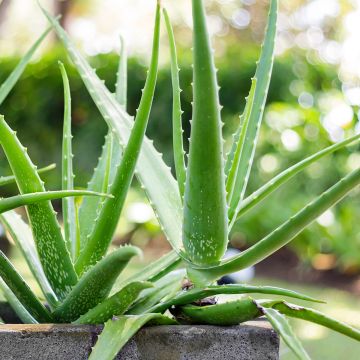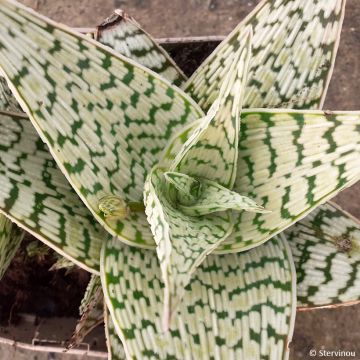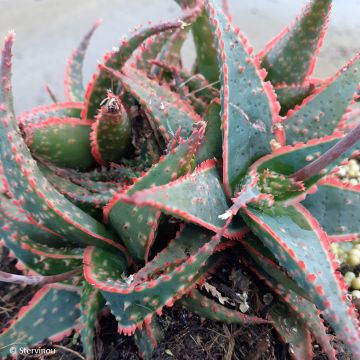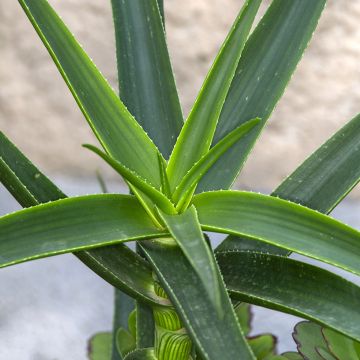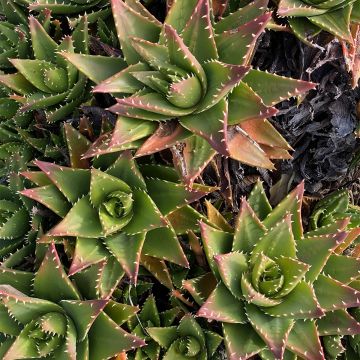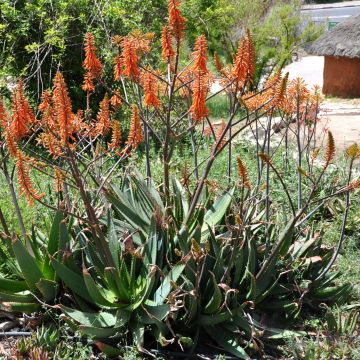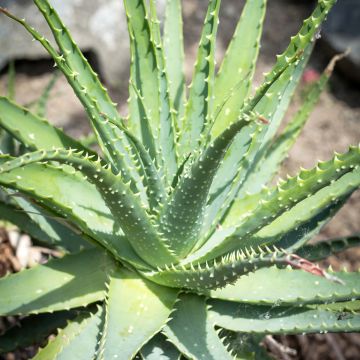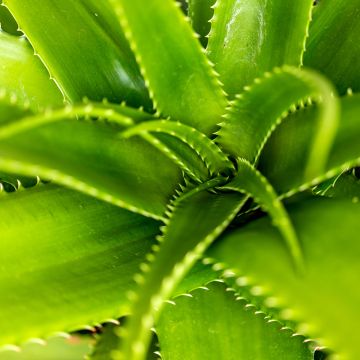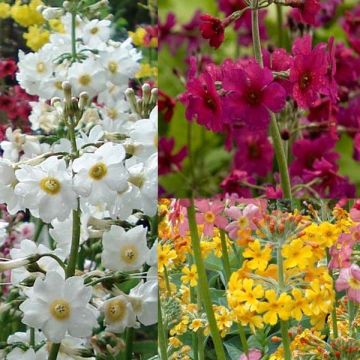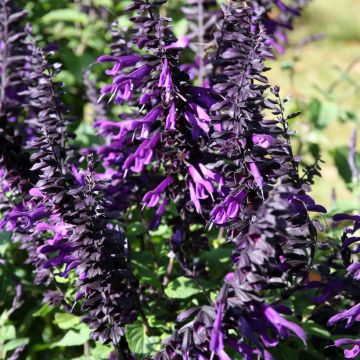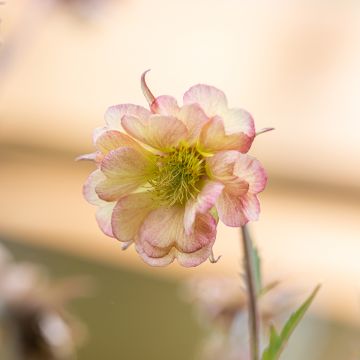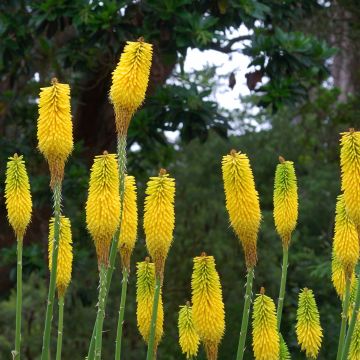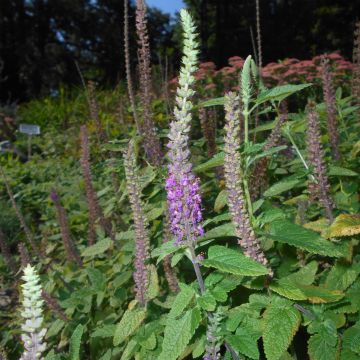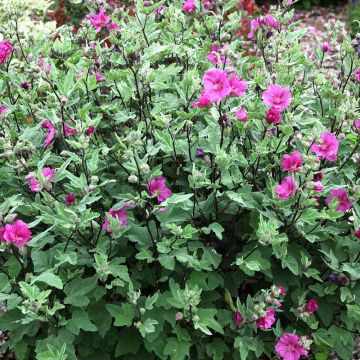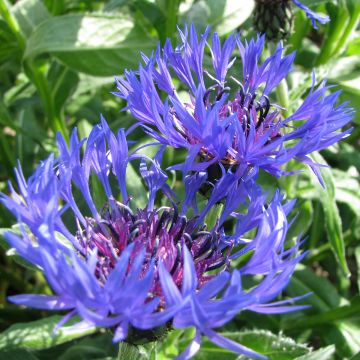

Aloe striatula
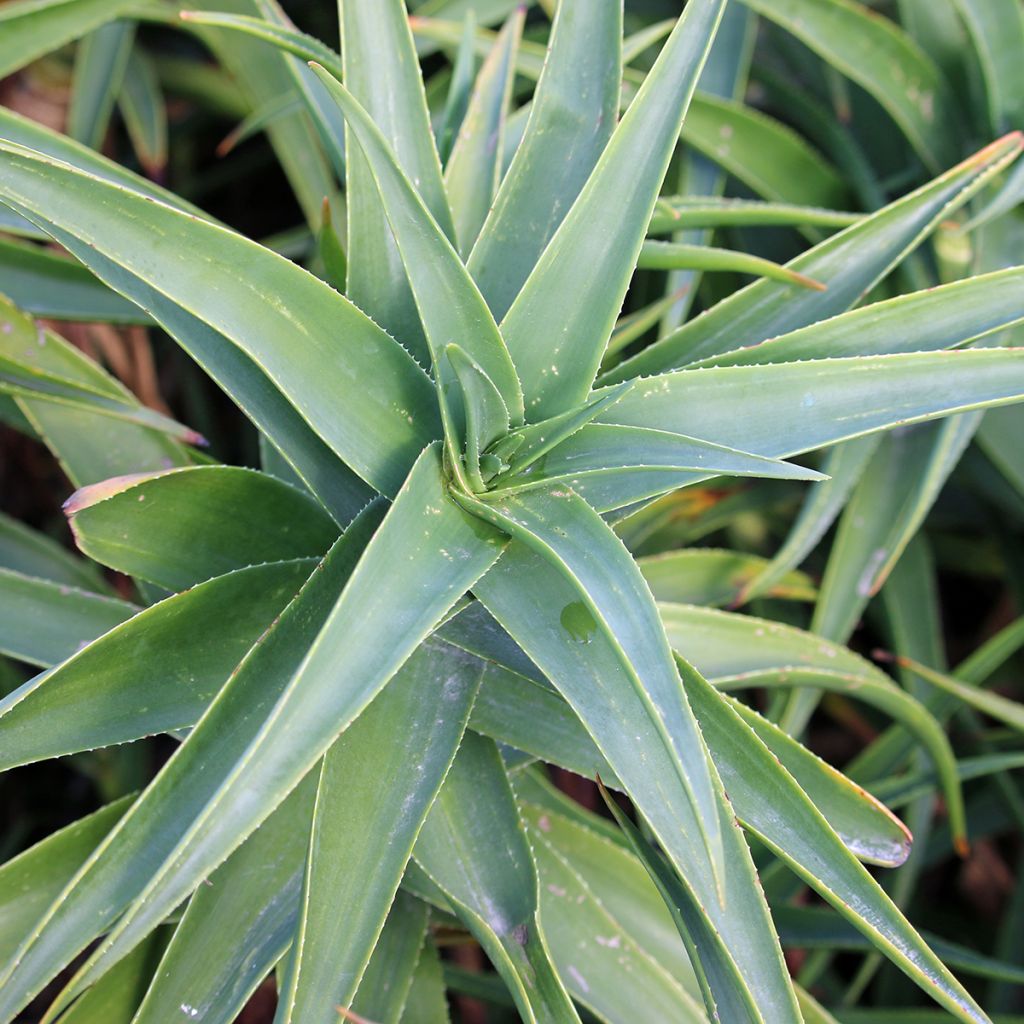

Aloe striatula


Aloe striatula
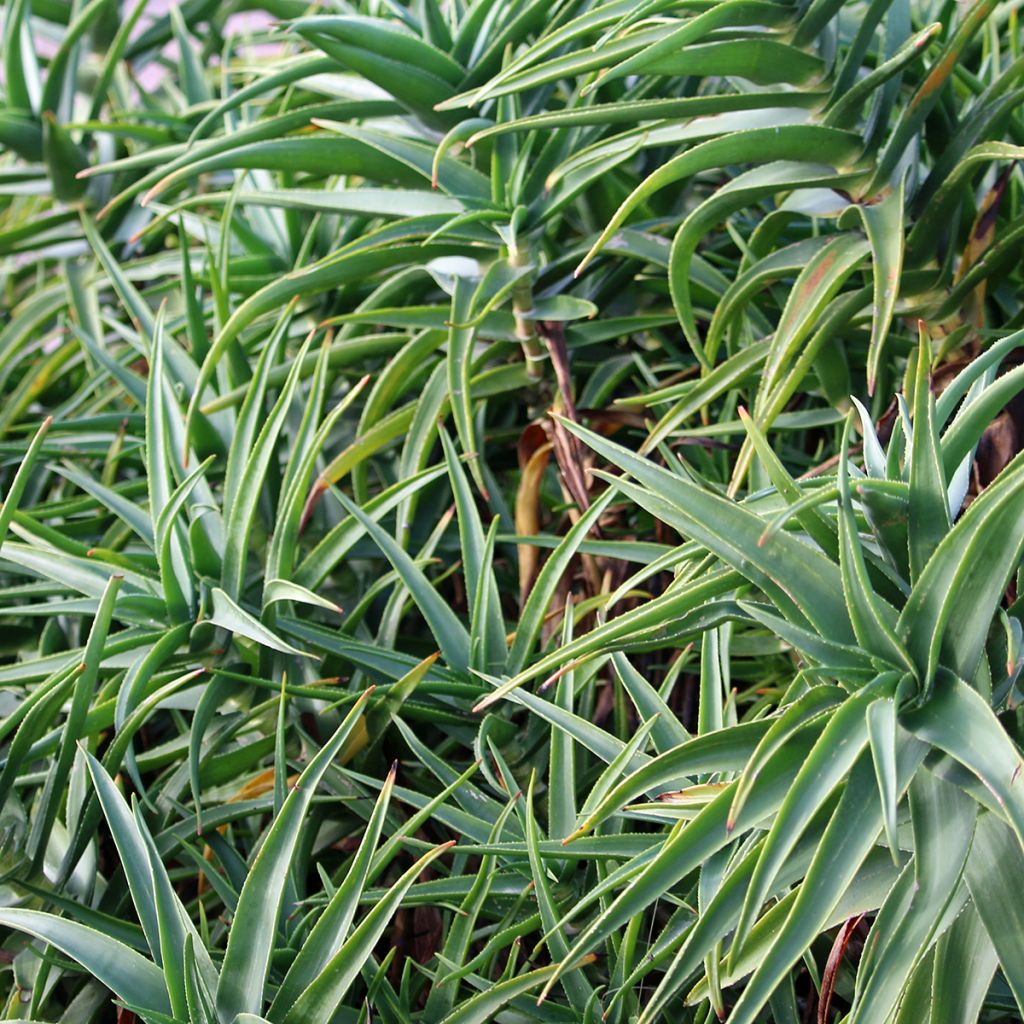

Aloe striatula
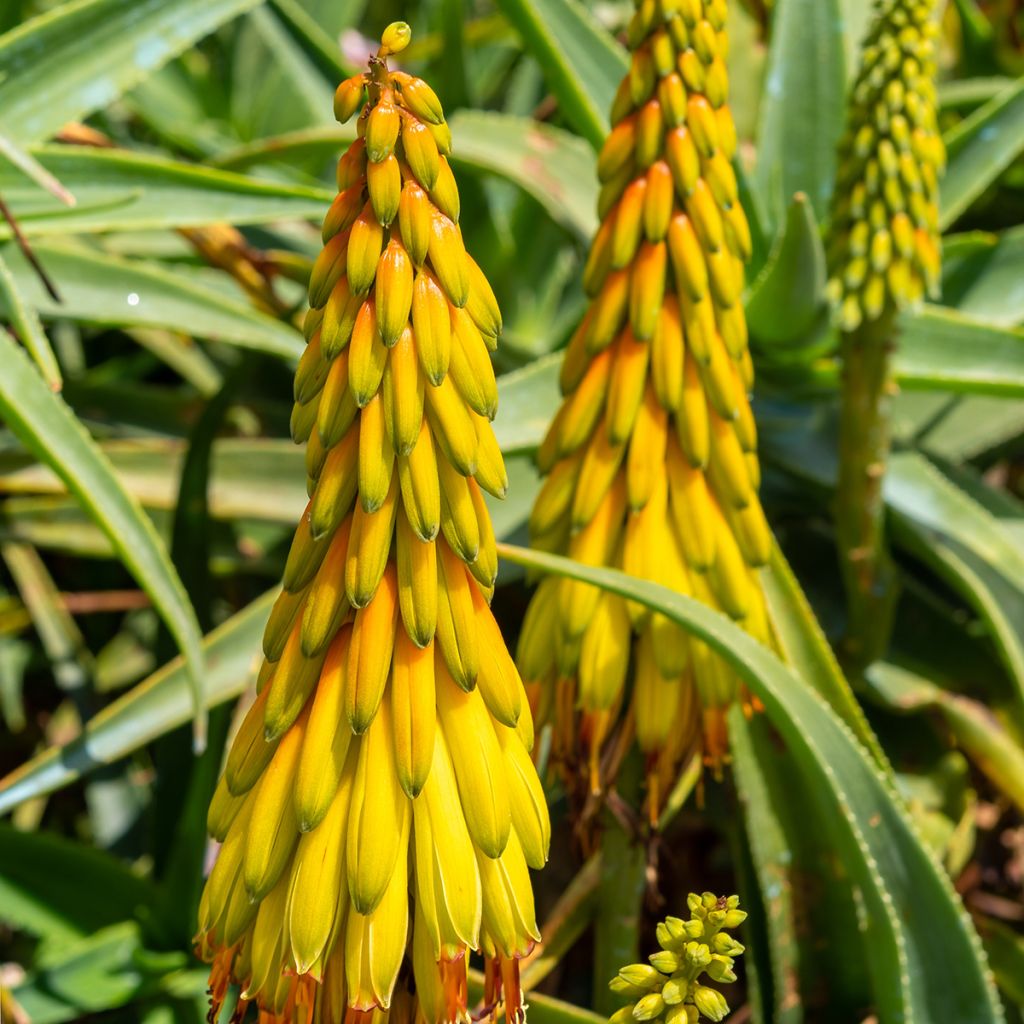

Aloe striatula


Aloe striatula
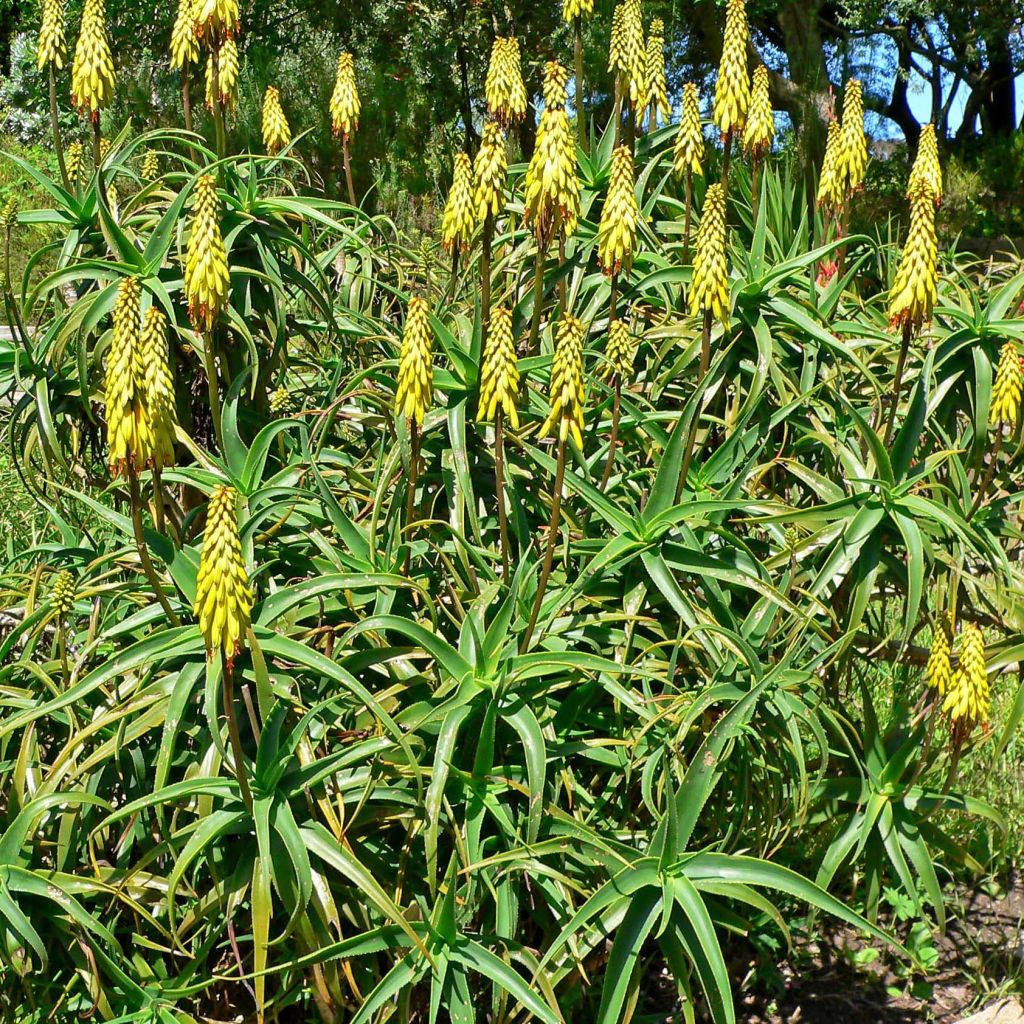

Aloe striatula
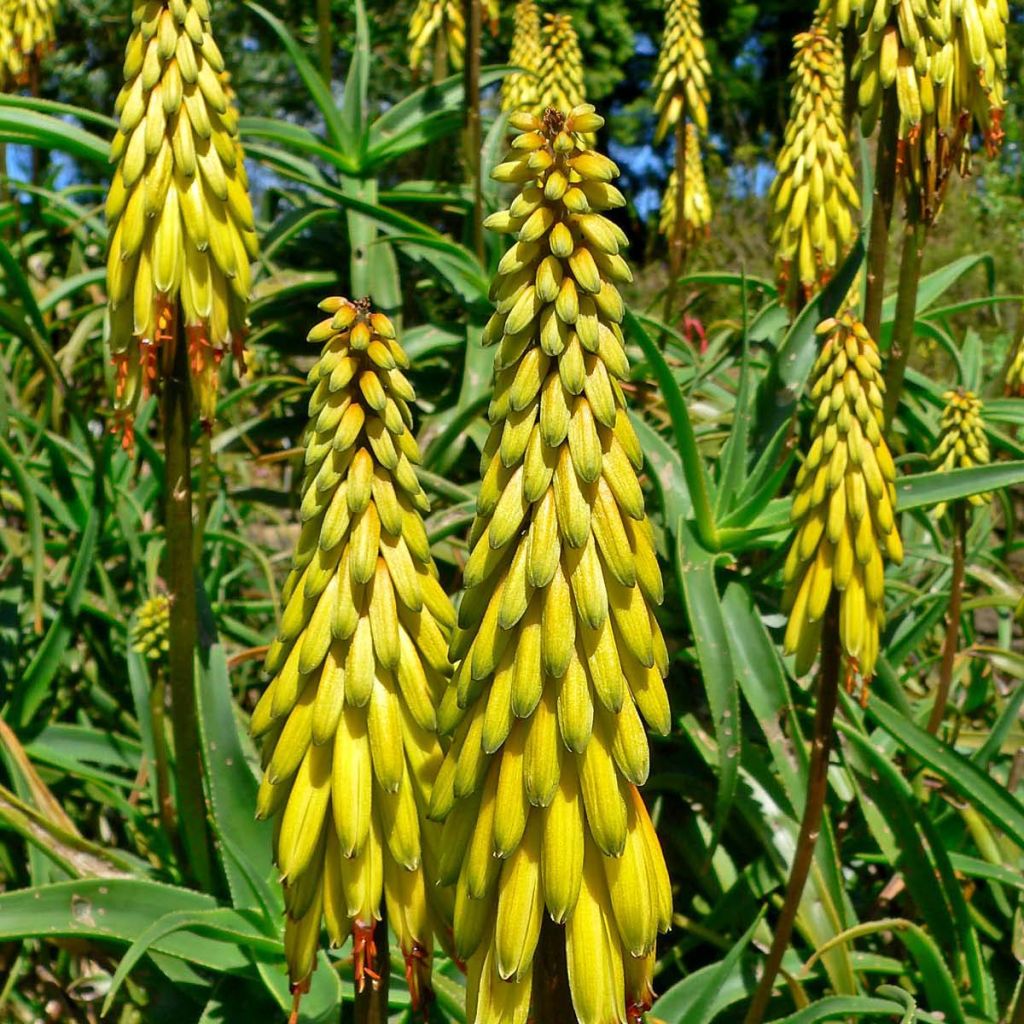

Aloe striatula
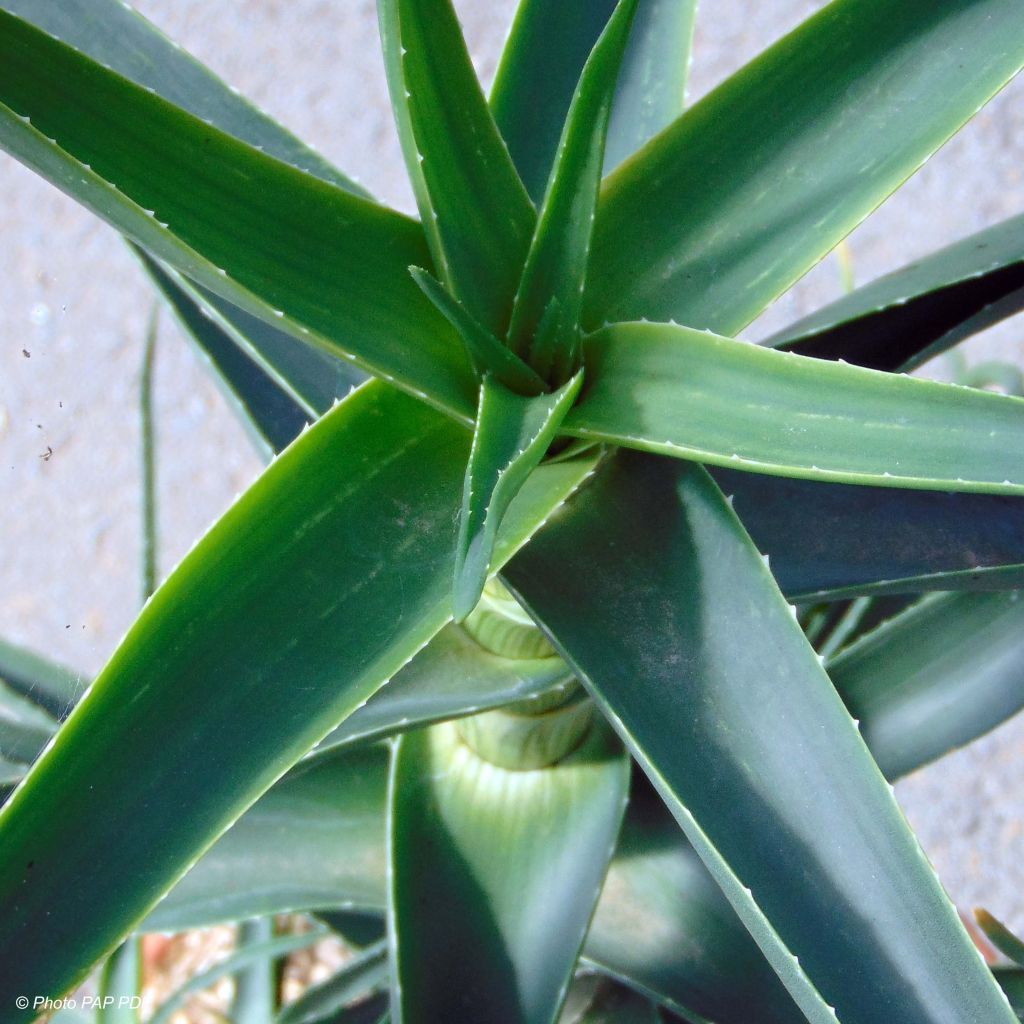

Aloe striatula
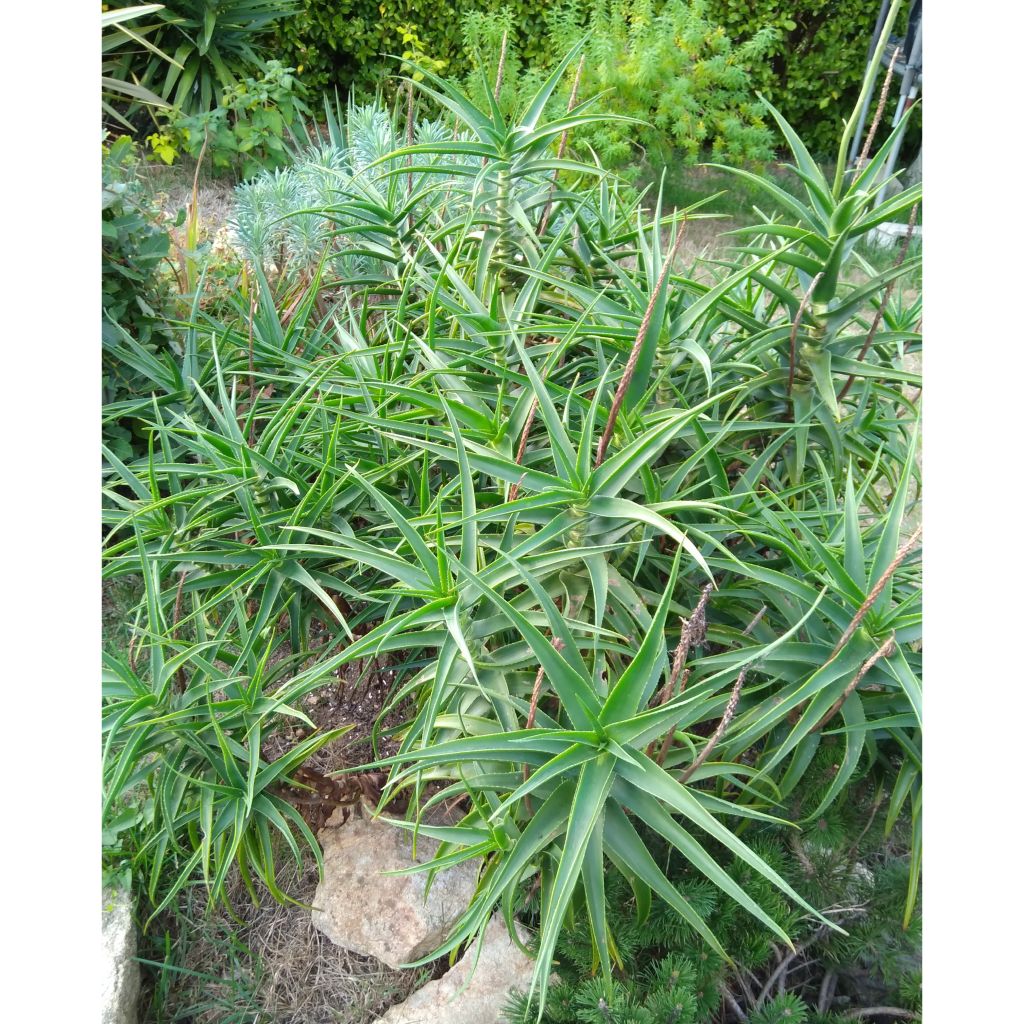

Aloe striatula
View more pictures
Hide images
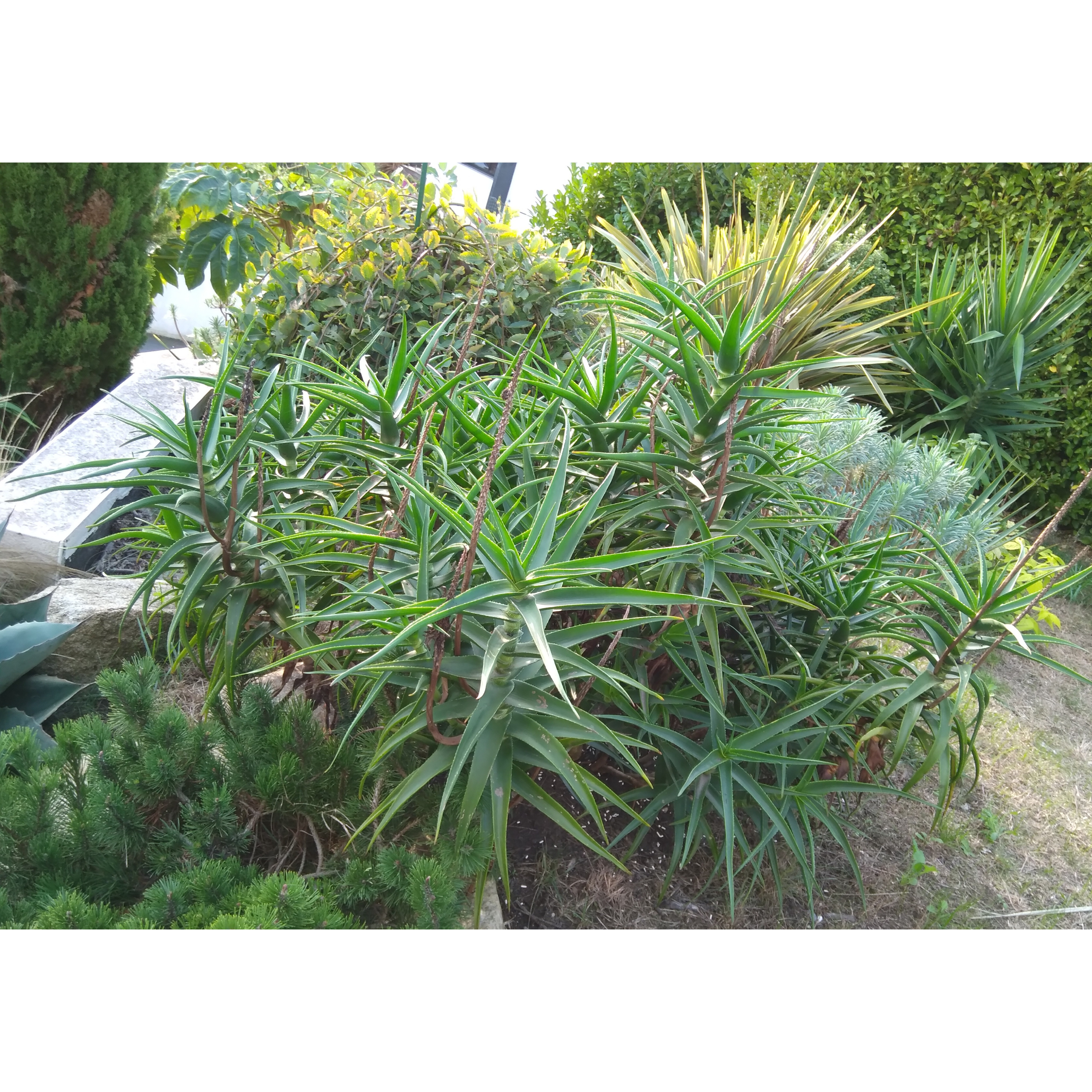
Samantha F.

No text to translate.
Samantha F. • 29 FR
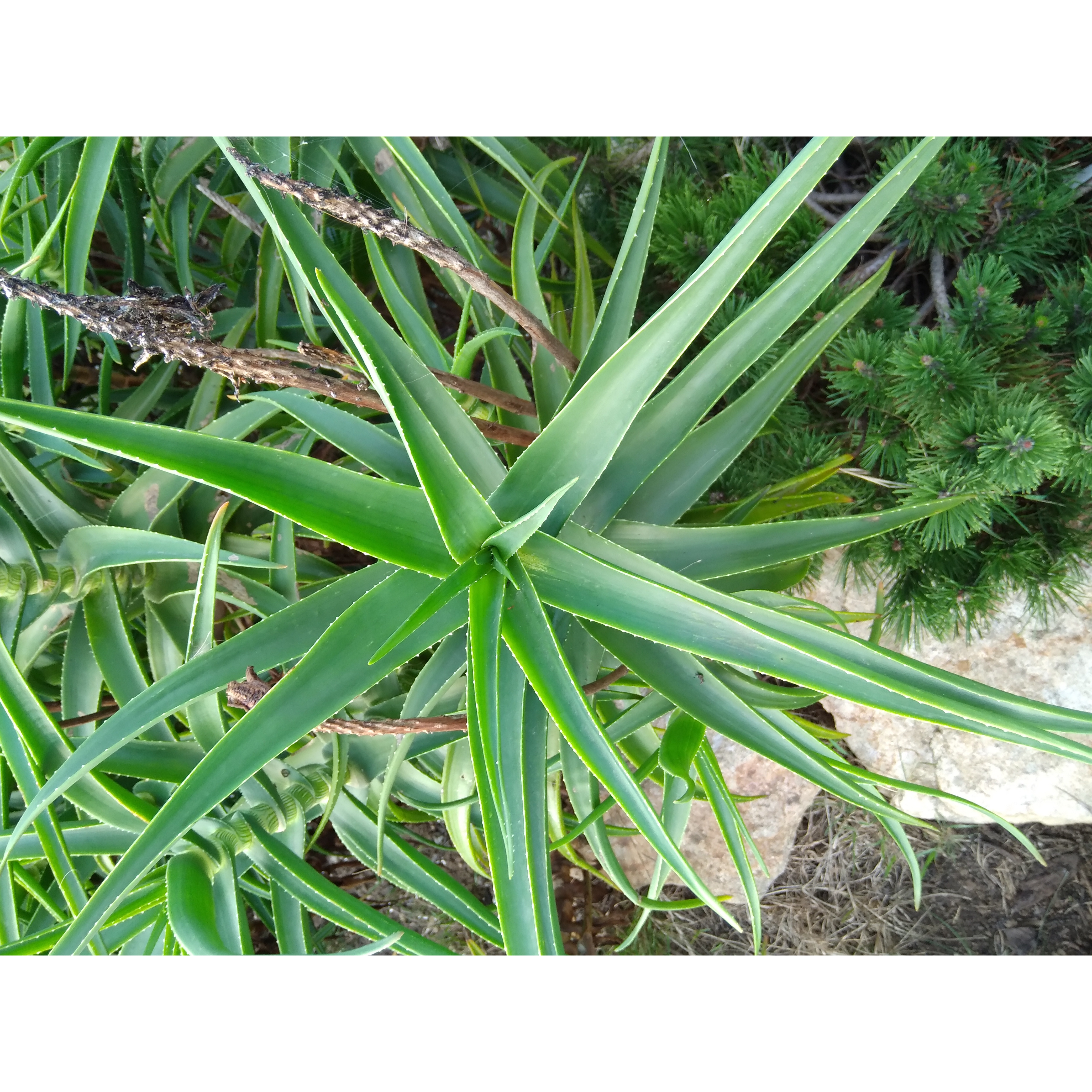
Samantha F.

Samantha F. • 29 FR
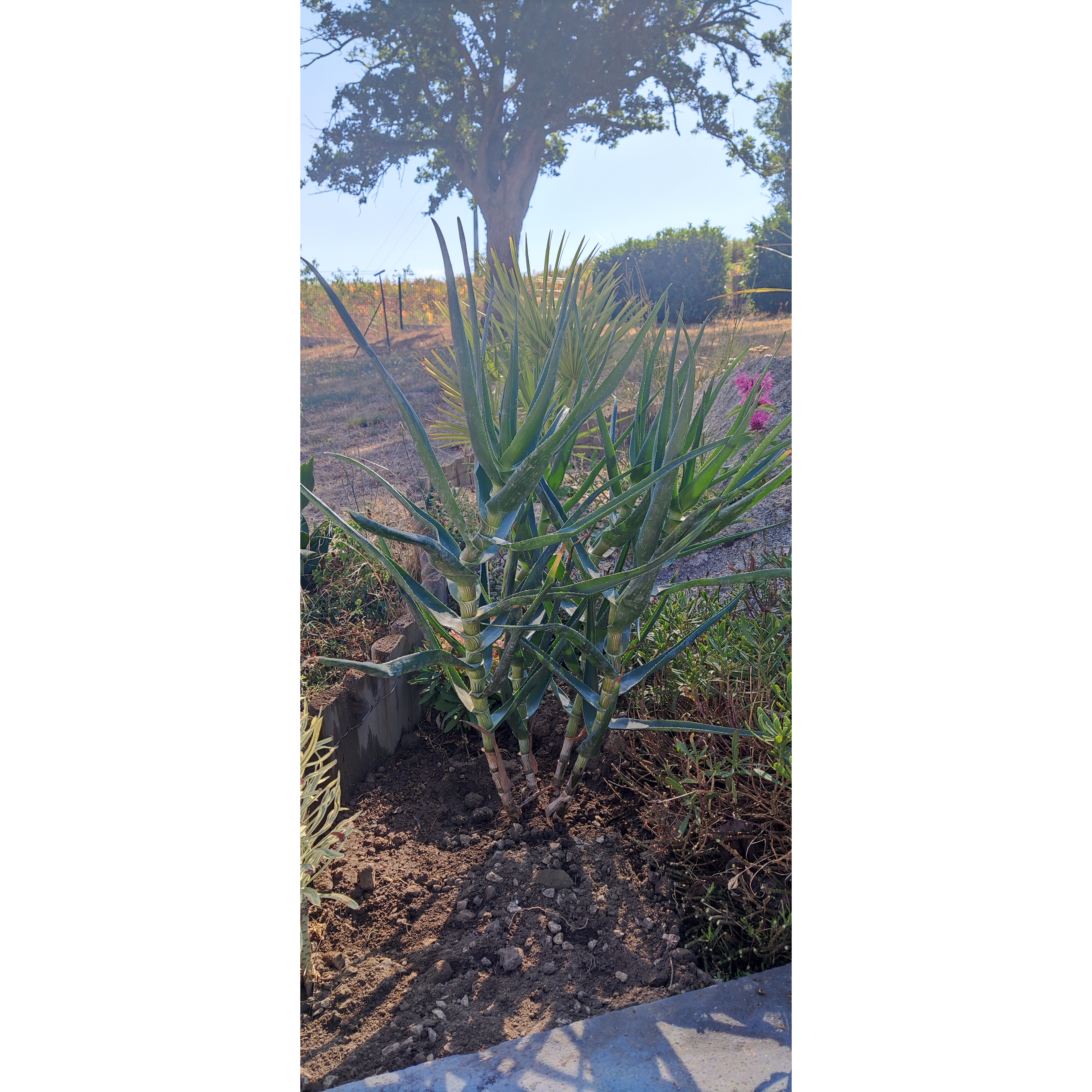
Virginie A.

This is an automatic translation. If the original text contains more information, please provide it so I can offer a better translation.
Virginie A. • 79 FR
Aloe striatula
Aloe striatula
Planted in April 2023. Has resisted very well through 2 winters in Angers.
Mathieu, 26/02/2025
Special offer!
Receive a €20 voucher for any order over €90 (excluding delivery costs, credit notes, and plastic-free options)!
1- Add your favorite plants to your cart.
2- Once you have reached €90, confirm your order (you can even choose the delivery date!).
3- As soon as your order is shipped, you will receive an email containing your voucher code, valid for 3 months (90 days).
Your voucher is unique and can only be used once, for any order with a minimum value of €20, excluding delivery costs.
Can be combined with other current offers, non-divisible and non-refundable.
Home or relay delivery (depending on size and destination)
Schedule delivery date,
and select date in basket
This plant carries a 12 months recovery warranty
More information
We guarantee the quality of our plants for a full growing cycle, and will replace at our expense any plant that fails to recover under normal climatic and planting conditions.


Would this plant suit my garden?
Set up your Plantfit profile →
Description
Aloe striatula is a bushy aloe composed of thick stems that bear rosettes of long, fleshy, striped leaves, ending in points. This unusual silhouette is adorned with abundant flowering in late spring, in the form of long spikes of yellow-orange flowers that somewhat resemble those of tritomas. With a very exotic appearance, this spectacular plant from the high mountains of South Africa is quite resistant to strong frosts if in well-drained soil, and is particularly resistant to summer drought. It can be adopted without hesitation in mild climates, and enjoys a steep and rocky terrain with a very sunny and sheltered exposure. It grows very well in a large pot on the terrace, and should be stored over winter in colder climates.
Aloe striatula is a botanical species in the family Asphodelaceae, native to the Karoo and the mountains of Lesotho, in southwestern South Africa. This plant grows at altitudes up to 2000m (6500 ft). It is a large plant, more bushy than perennial, with succulent and evergreen foliage. It forms a large bush of loose habit, with semi-erect thick branches that spread more or less along the ground. An adult plant will reach about 1.5 meters (5 ft) in height and a span of 2 meters (7 ft), or even more under good growing conditions. Its branches, on average 2 cm (0.8 in) wide, give rise to thick and waxy leaves bordered by small teeth, sheathed at the base in striated green membranes on a greenish-white background. In May-June, rosettes of tall flower spikes appear bearing tubular lemon yellow to yellow-orange flowers that are much visited by pollinating insects. Aloe striatula produces numerous new stems when severely pruned, a skill that can be used to give it a beautiful dome shape, especially ornamental when the plant is in bloom.
Highly resistant to sea spray and drought, but also well-suited to a garden soil lightened with gravel and properly drained, Aloe striatula can be grown in pots to decorate the terrace or balcony, as well as in the ground in not too cold climates; in a raised bed overlooking a path or garage driveway, and of course in a rock garden or on a dry slope. In mild coastal regions it can be planted in the ground, as it is hardy to around -12°C, with the aboveground parts being destroyed below -9°C (15.8 °F). It makes a magnificent specimen in a sloping or rocky well-drained soil, or even anchored in dry stone walls. Elsewhere, it can be planted in a pot wider than it is tall (it multiplies quickly) to enjoy its strong personality on a terrace in a contemporary or exotic style. It can be paired with e.g. agaves, prickly pears, Delosperma, Carpobrotus, or shrubby Euphorbias (Euphorbia mellifera).
About Agaves and Aloes:
Aloes and agaves are similar in appearance but belong to two different botanical families. The main distinction lies in the fact that aloe rosettes flower for many years, while the flowering of a mature agave rosette marks the end of its life. In some species of Aloes, interfoliar buds give rise to new plants that cover the dried remains of the mother plant. In agaves, the central flower spike develops from the terminal bud. In aloes, the flower buds emerge between the leaves. Agaves are native to North America, while aloes are found only in the southern half of Africa, as well as in islands near the Indian Ocean.
Report an error about the product description
Aloe striatula in pictures






Flowering
Foliage
Plant habit
Botanical data
Aloe
striatula
Asphodelaceae
South Africa
Other Aloe
View all →Planting and care
Like all "succulent" plants, aloes generally prefer full sun and a very well-drained, even arid, soil. Aloe striatula appreciates very rocky, gravelly or sandy soils, even poor ones, and is not afraid of limestone in the soil. The hardiness of this plant depends a lot on the soil drainage, which should not retain moisture in winter. Easy to grow in a dry and sunny rockery, an enriched gravel bed, or in large pots. This aloe can tolerate -9°C without apparent damage. In case of more severe frost, the aerial parts are destroyed but the plant regrows from the stump. Its resistance to summer drought is excellent. It tolerates pruning well in late winter, which helps give it a nice dome-shaped habit.
Planting period
Intended location
Care
-
, onOrder confirmed
Reply from on Promesse de fleurs
Similar products
Haven't found what you were looking for?
Hardiness is the lowest winter temperature a plant can endure without suffering serious damage or even dying. However, hardiness is affected by location (a sheltered area, such as a patio), protection (winter cover) and soil type (hardiness is improved by well-drained soil).

Photo Sharing Terms & Conditions
In order to encourage gardeners to interact and share their experiences, Promesse de fleurs offers various media enabling content to be uploaded onto its Site - in particular via the ‘Photo sharing’ module.
The User agrees to refrain from:
- Posting any content that is illegal, prejudicial, insulting, racist, inciteful to hatred, revisionist, contrary to public decency, that infringes on privacy or on the privacy rights of third parties, in particular the publicity rights of persons and goods, intellectual property rights, or the right to privacy.
- Submitting content on behalf of a third party;
- Impersonate the identity of a third party and/or publish any personal information about a third party;
In general, the User undertakes to refrain from any unethical behaviour.
All Content (in particular text, comments, files, images, photos, videos, creative works, etc.), which may be subject to property or intellectual property rights, image or other private rights, shall remain the property of the User, subject to the limited rights granted by the terms of the licence granted by Promesse de fleurs as stated below. Users are at liberty to publish or not to publish such Content on the Site, notably via the ‘Photo Sharing’ facility, and accept that this Content shall be made public and freely accessible, notably on the Internet.
Users further acknowledge, undertake to have ,and guarantee that they hold all necessary rights and permissions to publish such material on the Site, in particular with regard to the legislation in force pertaining to any privacy, property, intellectual property, image, or contractual rights, or rights of any other nature. By publishing such Content on the Site, Users acknowledge accepting full liability as publishers of the Content within the meaning of the law, and grant Promesse de fleurs, free of charge, an inclusive, worldwide licence for the said Content for the entire duration of its publication, including all reproduction, representation, up/downloading, displaying, performing, transmission, and storage rights.
Users also grant permission for their name to be linked to the Content and accept that this link may not always be made available.
By engaging in posting material, Users consent to their Content becoming automatically accessible on the Internet, in particular on other sites and/or blogs and/or web pages of the Promesse de fleurs site, including in particular social pages and the Promesse de fleurs catalogue.
Users may secure the removal of entrusted content free of charge by issuing a simple request via our contact form.
The flowering period indicated on our website applies to countries and regions located in USDA zone 8 (France, the United Kingdom, Ireland, the Netherlands, etc.)
It will vary according to where you live:
- In zones 9 to 10 (Italy, Spain, Greece, etc.), flowering will occur about 2 to 4 weeks earlier.
- In zones 6 to 7 (Germany, Poland, Slovenia, and lower mountainous regions), flowering will be delayed by 2 to 3 weeks.
- In zone 5 (Central Europe, Scandinavia), blooming will be delayed by 3 to 5 weeks.
In temperate climates, pruning of spring-flowering shrubs (forsythia, spireas, etc.) should be done just after flowering.
Pruning of summer-flowering shrubs (Indian Lilac, Perovskia, etc.) can be done in winter or spring.
In cold regions as well as with frost-sensitive plants, avoid pruning too early when severe frosts may still occur.
The planting period indicated on our website applies to countries and regions located in USDA zone 8 (France, United Kingdom, Ireland, Netherlands).
It will vary according to where you live:
- In Mediterranean zones (Marseille, Madrid, Milan, etc.), autumn and winter are the best planting periods.
- In continental zones (Strasbourg, Munich, Vienna, etc.), delay planting by 2 to 3 weeks in spring and bring it forward by 2 to 4 weeks in autumn.
- In mountainous regions (the Alps, Pyrenees, Carpathians, etc.), it is best to plant in late spring (May-June) or late summer (August-September).
The harvesting period indicated on our website applies to countries and regions in USDA zone 8 (France, England, Ireland, the Netherlands).
In colder areas (Scandinavia, Poland, Austria...) fruit and vegetable harvests are likely to be delayed by 3-4 weeks.
In warmer areas (Italy, Spain, Greece, etc.), harvesting will probably take place earlier, depending on weather conditions.
The sowing periods indicated on our website apply to countries and regions within USDA Zone 8 (France, UK, Ireland, Netherlands).
In colder areas (Scandinavia, Poland, Austria...), delay any outdoor sowing by 3-4 weeks, or sow under glass.
In warmer climes (Italy, Spain, Greece, etc.), bring outdoor sowing forward by a few weeks.






























